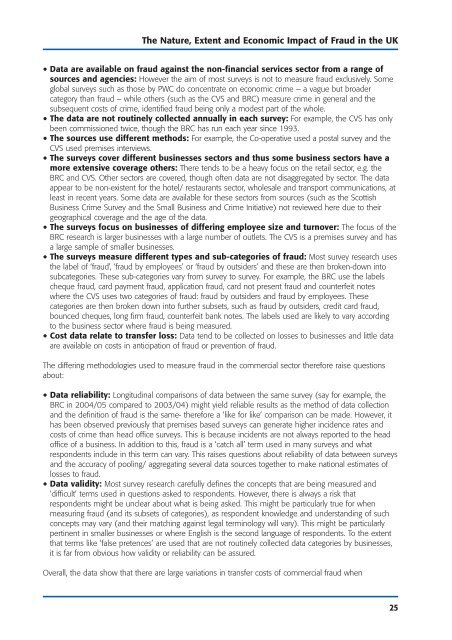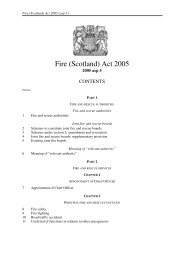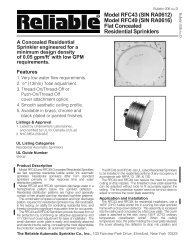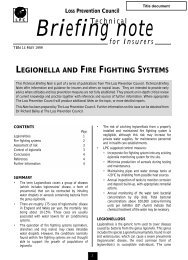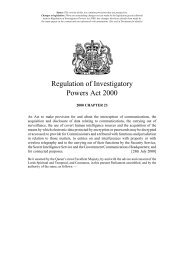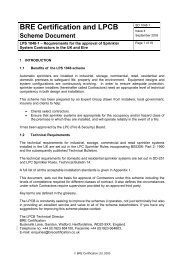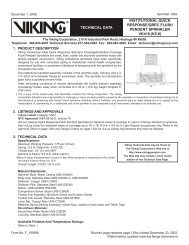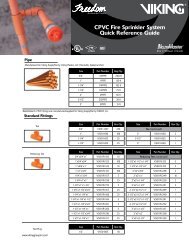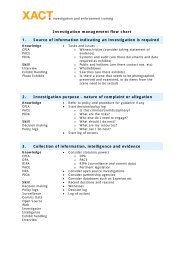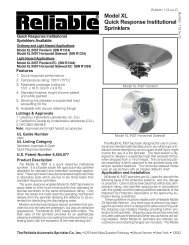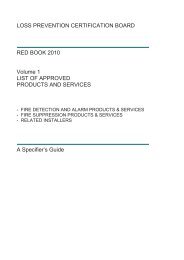The Nature, Extent and Economic Impact of ... - Cardiff University
The Nature, Extent and Economic Impact of ... - Cardiff University
The Nature, Extent and Economic Impact of ... - Cardiff University
Create successful ePaper yourself
Turn your PDF publications into a flip-book with our unique Google optimized e-Paper software.
<strong>The</strong> <strong>Nature</strong>, <strong>Extent</strong> <strong>and</strong> <strong>Economic</strong> <strong>Impact</strong> <strong>of</strong> Fraud in the UK<br />
5 Data are available on fraud against the non-financial services sector from a range <strong>of</strong><br />
sources <strong>and</strong> agencies: However the aim <strong>of</strong> most surveys is not to measure fraud exclusively. Some<br />
global surveys such as those by PWC do concentrate on economic crime – a vague but broader<br />
category than fraud – while others (such as the CVS <strong>and</strong> BRC) measure crime in general <strong>and</strong> the<br />
subsequent costs <strong>of</strong> crime, identified fraud being only a modest part <strong>of</strong> the whole.<br />
5 <strong>The</strong> data are not routinely collected annually in each survey: For example, the CVS has only<br />
been commissioned twice, though the BRC has run each year since 1993.<br />
5 <strong>The</strong> sources use different methods: For example, the Co-operative used a postal survey <strong>and</strong> the<br />
CVS used premises interviews.<br />
5 <strong>The</strong> surveys cover different businesses sectors <strong>and</strong> thus some business sectors have a<br />
more extensive coverage others: <strong>The</strong>re tends to be a heavy focus on the retail sector, e.g. the<br />
BRC <strong>and</strong> CVS. Other sectors are covered, though <strong>of</strong>ten data are not disaggregated by sector. <strong>The</strong> data<br />
appear to be non-existent for the hotel/ restaurants sector, wholesale <strong>and</strong> transport communications, at<br />
least in recent years. Some data are available for these sectors from sources (such as the Scottish<br />
Business Crime Survey <strong>and</strong> the Small Business <strong>and</strong> Crime Initiative) not reviewed here due to their<br />
geographical coverage <strong>and</strong> the age <strong>of</strong> the data.<br />
5 <strong>The</strong> surveys focus on businesses <strong>of</strong> differing employee size <strong>and</strong> turnover: <strong>The</strong> focus <strong>of</strong> the<br />
BRC research is larger businesses with a large number <strong>of</strong> outlets. <strong>The</strong> CVS is a premises survey <strong>and</strong> has<br />
a large sample <strong>of</strong> smaller businesses.<br />
5 <strong>The</strong> surveys measure different types <strong>and</strong> sub-categories <strong>of</strong> fraud: Most survey research uses<br />
the label <strong>of</strong> ‘fraud’, ‘fraud by employees’ or ‘fraud by outsiders’ <strong>and</strong> these are then broken-down into<br />
subcategories. <strong>The</strong>se sub-categories vary from survey to survey. For example, the BRC use the labels<br />
cheque fraud, card payment fraud, application fraud, card not present fraud <strong>and</strong> counterfeit notes<br />
where the CVS uses two categories <strong>of</strong> fraud: fraud by outsiders <strong>and</strong> fraud by employees. <strong>The</strong>se<br />
categories are then broken down into further subsets, such as fraud by outsiders, credit card fraud,<br />
bounced cheques, long firm fraud, counterfeit bank notes. <strong>The</strong> labels used are likely to vary according<br />
to the business sector where fraud is being measured.<br />
5 Cost data relate to transfer loss: Data tend to be collected on losses to businesses <strong>and</strong> little data<br />
are available on costs in anticipation <strong>of</strong> fraud or prevention <strong>of</strong> fraud.<br />
<strong>The</strong> differing methodologies used to measure fraud in the commercial sector therefore raise questions<br />
about:<br />
5 Data reliability: Longitudinal comparisons <strong>of</strong> data between the same survey (say for example, the<br />
BRC in 2004/05 compared to 2003/04) might yield reliable results as the method <strong>of</strong> data collection<br />
<strong>and</strong> the definition <strong>of</strong> fraud is the same- therefore a ‘like for like’ comparison can be made. However, it<br />
has been observed previously that premises based surveys can generate higher incidence rates <strong>and</strong><br />
costs <strong>of</strong> crime than head <strong>of</strong>fice surveys. This is because incidents are not always reported to the head<br />
<strong>of</strong>fice <strong>of</strong> a business. In addition to this, fraud is a ‘catch all’ term used in many surveys <strong>and</strong> what<br />
respondents include in this term can vary. This raises questions about reliability <strong>of</strong> data between surveys<br />
<strong>and</strong> the accuracy <strong>of</strong> pooling/ aggregating several data sources together to make national estimates <strong>of</strong><br />
losses to fraud.<br />
5 Data validity: Most survey research carefully defines the concepts that are being measured <strong>and</strong><br />
‘difficult’ terms used in questions asked to respondents. However, there is always a risk that<br />
respondents might be unclear about what is being asked. This might be particularly true for when<br />
measuring fraud (<strong>and</strong> its subsets <strong>of</strong> categories), as respondent knowledge <strong>and</strong> underst<strong>and</strong>ing <strong>of</strong> such<br />
concepts may vary (<strong>and</strong> their matching against legal terminology will vary). This might be particularly<br />
pertinent in smaller businesses or where English is the second language <strong>of</strong> respondents. To the extent<br />
that terms like ‘false pretences’ are used that are not routinely collected data categories by businesses,<br />
it is far from obvious how validity or reliability can be assured.<br />
Overall, the data show that there are large variations in transfer costs <strong>of</strong> commercial fraud when<br />
25


